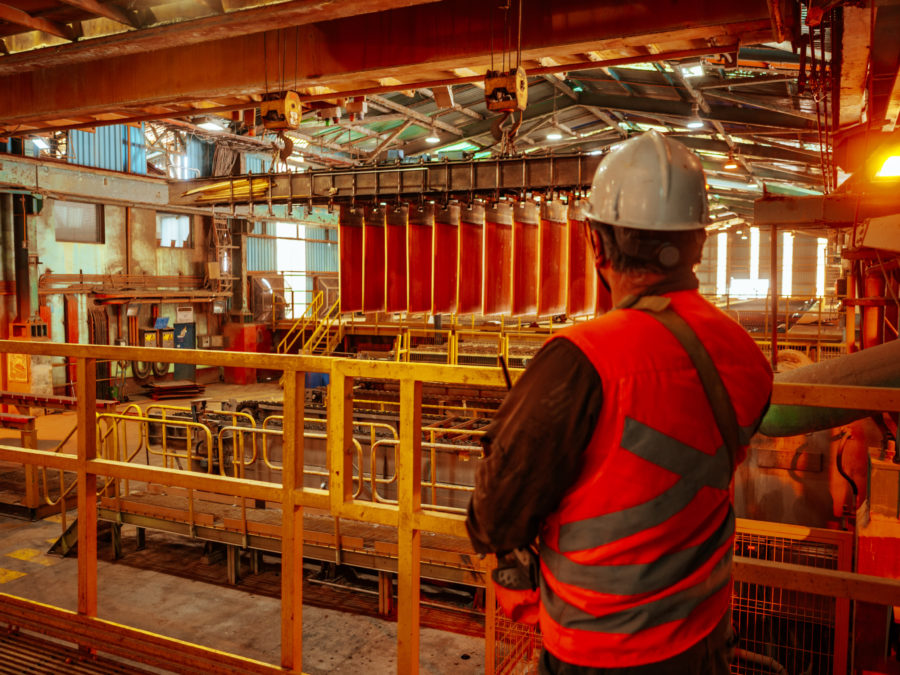Column: China’s zinc imports reflect shifting market dynamics

China’s imports of zinc concentrates fell sharply over the first four months of this year in response to a tightening raw materials market.
Spot treatment terms for imported mine concentrates are currently trading at levels that are uneconomic for many Chinese smelters, forcing them to rely more on domestic mine supply.
It’s probably no coincidence that flows of refined zinc into the country have been much stronger than this time last year.
Such is the current dynamic of the global zinc market. There is plenty of metal around but an ongoing squeeze on raw materials due to weak global mine production.
Tight concentrates market
China imported 1.18 million metric tons of zinc concentrates in the first four months of this year, down 24% on last year’s equivalent tally of 1.54 million tons.
This is a pronounced change of trend after raw materials imports increased by 13% and 14% in 2022 and 2023 respectively.
The cause is the collapse in treatment and refining charges, which are paid by miners to smelters for processing raw materials into refined metal.
Chinese smelters looking to buy on the international market are facing rock-bottom terms of $30-50 per ton, according to price reporting agency Fastmarkets.
This year’s annual benchmark terms, set by Canadian miner Teck Resources and Korea Zinc in the first quarter, came in at $165 per ton. That marked a hefty discount from the 2023 benchmark of $274 but is already looking very generous to smelters in light of the bombed-out spot market.
The underlying problem is weak global mine output. The world’s zinc mines saw production fall by 2% in 2022 and another 1% in 2023. There has been no recovery so far this year, output sliding another 3% year-on-year in the first quarter, according to the latest assessment by the International Lead and Zinc Study Group (ILZSG).
The squeeze on raw materials has been accentuated by restarts of idled smelter capacity in Europe, reducing the amount of concentrates available on the spot market.
China’s imports of refined zinc on a surge
Plentiful metal supply
While Chinese smelters are struggling to source concentrates at economically viable prices, the country’s imports of refined zinc are trending higher.
Inbound volumes totalled 143,000 tons in the first four months of this year, compared with just 35,000 tons in the same period of 2023.
China turned a net exporter of zinc in 2022, a rare phenomenon caused by multiple smelter outages in Europe due to super-high energy prices.
Trade patterns reverted to historical norms around the middle of last year with the export tap largely turned off ever since and imports accelerating.
There is no shortage of refined metal.
London Metal Exchange (LME) stocks rebuilt from a depleted 30,475 tons to 223,225 tons over the course of 2023 and at a current 255,900, they are up another 15% since the start of January.
There has been a lot of churn in registered inventory this year as stocks financiers play the warehouse arbitrage game but the headline figure has largely held in a 250,000-260,000-ton range since the start of April.
A wide contango across the LME zinc forward curve underlines the abundance of metal right now.
The LME’s benchmark cash-to-three-months time-spread flexed out to a multi-year high of $62 per ton at the end of May and again earlier this month. It was still close to those levels at $57 as of the Wednesday close.
The ILZSG estimates the global market generated a supply surplus of almost 300,000 tons last year, which explains why there’s so much metal around.
Shrinking surplus
The global zinc market remains in surplus, according to the ILZSG, which estimates production exceeded usage by a significant 144,000 tons in the first three months of 2024.
The Group’s most recent forecast in April was for a diminished 56,000-ton supply surplus over the year as a whole.
Key to that market balance assessment was a forecast that mined supply will again under-perform, acting as a restraint on refined metal production, particularly in China.
The country’s zinc concentrates trade shows that dynamic is starting to play out with a knock-on impact on smelter run rates.
China’s refined zinc output surge by 8% last year, according to ILZSG. Production growth in the first quarter of this year braked sharply to 1.6%, according to local data provider Shanghai Metal Market.
However, the combination of China’s increased refined metal imports and still high LME inventories suggests there is a way to go yet before the current concentrates squeeze turns into a metal squeeze.
(The opinions expressed here are those of the author, Andy Home, a columnist for Reuters.)
(Editing by David Evans)
{{ commodity.name }}
{{ post.title }}
{{ post.date }}

Comments